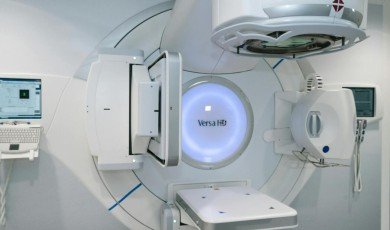Artificial intelligence is rapidly reshaping how we diagnose, study, and treat cancer. From spotting tumors earlier to predicting which therapies will work best for each patient, advanced algorithms are helping researchers move from trial-and-error to data-driven precision. While human expertise remains central to every decision, machine learning and large-scale data analysis are speeding up steps that once took months or even years.
As cancer centers, research teams, and biotech companies look for ways to accelerate breakthroughs, they increasingly turn to specialized AI tools that can transform messy, complex medical data into actionable insights. These platforms do not replace oncologists or scientists; instead, they enhance their capabilities, allowing them to identify promising directions faster, design better studies, and connect the right patients with the right treatments.
1. Accelerating Drug Discovery Pipelines
One of the slowest steps in bringing a new cancer therapy to patients is early-stage drug discovery. Traditional methods require testing thousands of compounds in the lab before a handful move into preclinical and clinical studies. AI-driven platforms can quickly analyze chemical structures, biological targets, and vast libraries of prior results to predict which compounds are most likely to work.
By modeling how molecules interact with cancer-related proteins, algorithms help researchers prioritize the most promising candidates, cutting down experimental cycles. This doesn’t just save time; it also reduces costs and frees scientists to focus on confirming the most viable options instead of screening every possible compound manually.
2. Making Clinical Trials Smarter and More Efficient
Clinical trials are essential for proving whether a cancer treatment is safe and effective, but they are often slow, expensive, and difficult to enroll. AI can assist in matching eligible patients to appropriate trials by analyzing electronic health records, pathology reports, and genomic profiles at scale. This makes it easier to locate individuals who meet very specific inclusion criteria.
Beyond matching, machine learning can optimize trial design itself. By simulating different enrollment strategies, dosage schedules, or endpoints, teams can predict which designs are more likely to yield clear, statistically meaningful results. This helps reduce failed trials and shortens the path from hypothesis to evidence.
3. Enhancing Early Detection and Diagnosis
Early detection is one of the strongest predictors of survival in many cancers. AI-based image analysis tools can assist radiologists and pathologists in identifying subtle patterns in scans and tissue samples that may be easy to miss with the naked eye. In mammography, lung CTs, and dermatology imaging, algorithms trained on large datasets can flag suspicious areas for closer human review.
In pathology, digital slide scanners combined with pattern-recognition models can quickly screen slides for likely malignant cells. This can reduce turnaround times, support overloaded pathology teams, and improve diagnostic consistency, particularly in settings where sub-specialty expertise is limited.
4. Powering Precision Oncology Through Data Integration
Modern oncology increasingly relies on genomic and molecular data. Tumor sequencing can reveal mutations, gene expression signatures, and other biomarkers that influence which targeted therapies or immunotherapies are most likely to work. However, interpreting these complex datasets is a major challenge.
AI can integrate genomic profiles with clinical history, imaging, treatment responses, and real-world outcomes across thousands of patients. By learning from these combined datasets, algorithms can suggest which therapies have historically performed best in patients with similar characteristics, supporting oncologists as they craft personalized treatment plans.
5. Predicting Treatment Response and Resistance
Even when a therapy looks promising, not every patient will respond—and some will develop resistance over time. Predictive models trained on longitudinal data can estimate the likelihood of response to specific regimens based on tumor markers, immune signatures, prior treatments, and comorbidities.
As patients move through therapy, ongoing data feeds—lab results, imaging updates, symptom reports—can be used to update these predictions. If a model flags early signs of resistance or adverse reactions, clinicians can consider adjusting the treatment plan more quickly, potentially improving outcomes and reducing unnecessary toxicity.
6. Supporting Oncologists With Decision Guidance
Oncologists must synthesize an overwhelming volume of information: clinical guidelines, new trial data, molecular reports, and individual patient preferences. AI-powered decision-support systems can surface relevant options, highlight potential drug–drug interactions, and suggest evidence-based combinations or sequences of therapy.
These systems work best as transparent partners, showing how recommendations were generated and pointing to the underlying evidence base. This allows clinicians to verify and modify suggestions, ensuring that human judgment and patient context remain at the center of care.
7. Unlocking Insights From Real-World Data
Clinical trials capture only a small fraction of what happens in everyday oncology practice. Real-world data from health records, registries, insurance claims, and patient-reported outcomes contain invaluable signals about how treatments perform outside controlled trial settings.
AI excels at sifting through this messy, unstructured information. Natural language processing can extract key elements from free-text notes, while advanced analytics can correlate treatments with survival, quality of life, and side-effect profiles. This helps stakeholders identify gaps in care, refine treatment guidelines, and pinpoint subgroups that benefit most from specific interventions.
8. Improving Access and Reducing Inequities
Access to cutting-edge cancer care remains uneven across regions and populations. AI-driven tools have the potential to reduce some of these disparities by making expert-level analysis more widely available. For example, remote image review supported by automated triage can help smaller hospitals or clinics tap into specialized expertise.
Additionally, AI can help identify patterns of underdiagnosis, undertreatment, or delayed care among specific demographic groups, guiding targeted interventions and policy changes. When thoughtfully deployed, these technologies can support more equitable cancer outcomes.
9. Maintaining Ethics, Transparency, and Human Oversight
While the promise is substantial, responsible use of AI in oncology requires clear guardrails. Models must be trained and validated on diverse, representative datasets to avoid embedding or amplifying bias. Patients’ privacy and data security must be protected through robust governance frameworks.
Crucially, AI-generated insights should always be subject to expert review. These systems are tools to augment—not replace—clinicians’ experience, empathy, and nuanced understanding of each patient’s circumstances. Transparent methodologies and explainable outputs help build trust among both professionals and the public.
Conclusion: Turning Data Into Actionable Progress
The volume and complexity of cancer-related data have exploded, spanning genomics, imaging, clinical records, and real-world outcomes. Without sophisticated analytic support, much of that information remains underused. AI-driven platforms can transform this data into insights that move discoveries forward, streamline trials, and inform more personalized treatment strategies.
For cancer researchers, clinicians, and healthcare organizations, the question is no longer whether to adopt intelligent tools but how to deploy them thoughtfully, ethically, and at scale. Teams that learn to combine human expertise with advanced computational capabilities will be better positioned to shorten the distance between promising science and life-extending therapies for patients worldwide.







